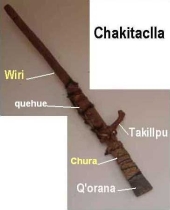


Tereza Okava wrote:(I don't think it's normal, just what I do here at the Depths of Laziness Ranch)





Mercy Pergande wrote:
Hannah Johnson wrote:
P.S.
There is a strange rumor going around my overseas community-- that the producers of fresh market cheese (large but not industrial businesses, I believe) are somehow using fertilizer as an ingredient in their cheeses. Rumors can blossom in interesting ways and I don't know enough about cheesemaking to know how to chalk up the rumor. Any thoughts or info on what might be behind such an idea? Total nonsense? distorted understanding of a normal process? or actually whistleblowing on something that could be done nefariously for convenience? I think it could be a case of the wrong person witnessing and greatly misunderstanding something normal in cheesemaking, but I'm curious if anyone has any thoughts/insights here.
That doesn't make sense to me. The only thing I can imagine, which I think is a stretch, is that an emulsifier was used in something and the "sodium phosphate" or"potassium phosphate" was thought to be an agricultural version. But there aren't a lot of additives that would make sense to cheat by using something "off book" that I can think of.



